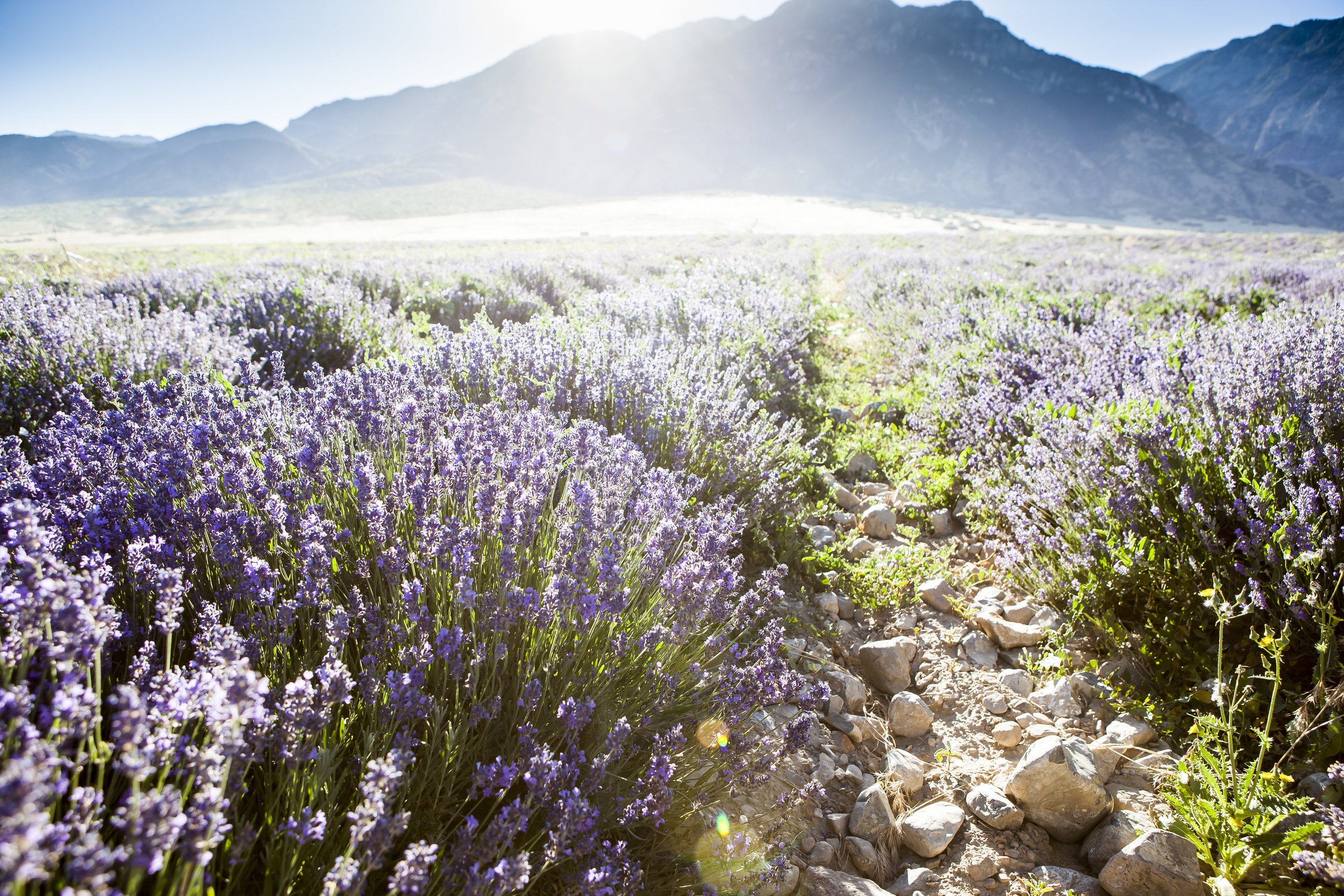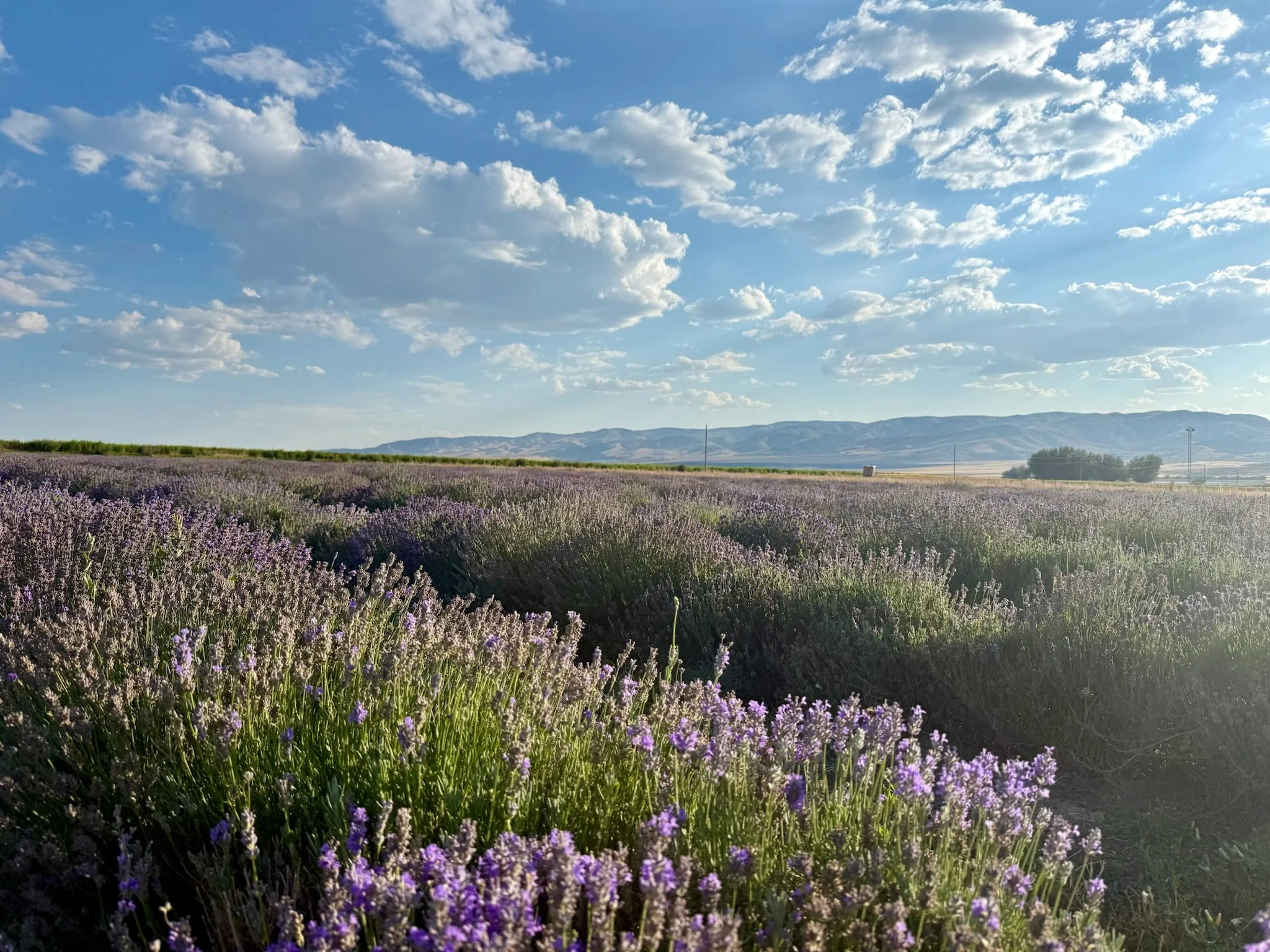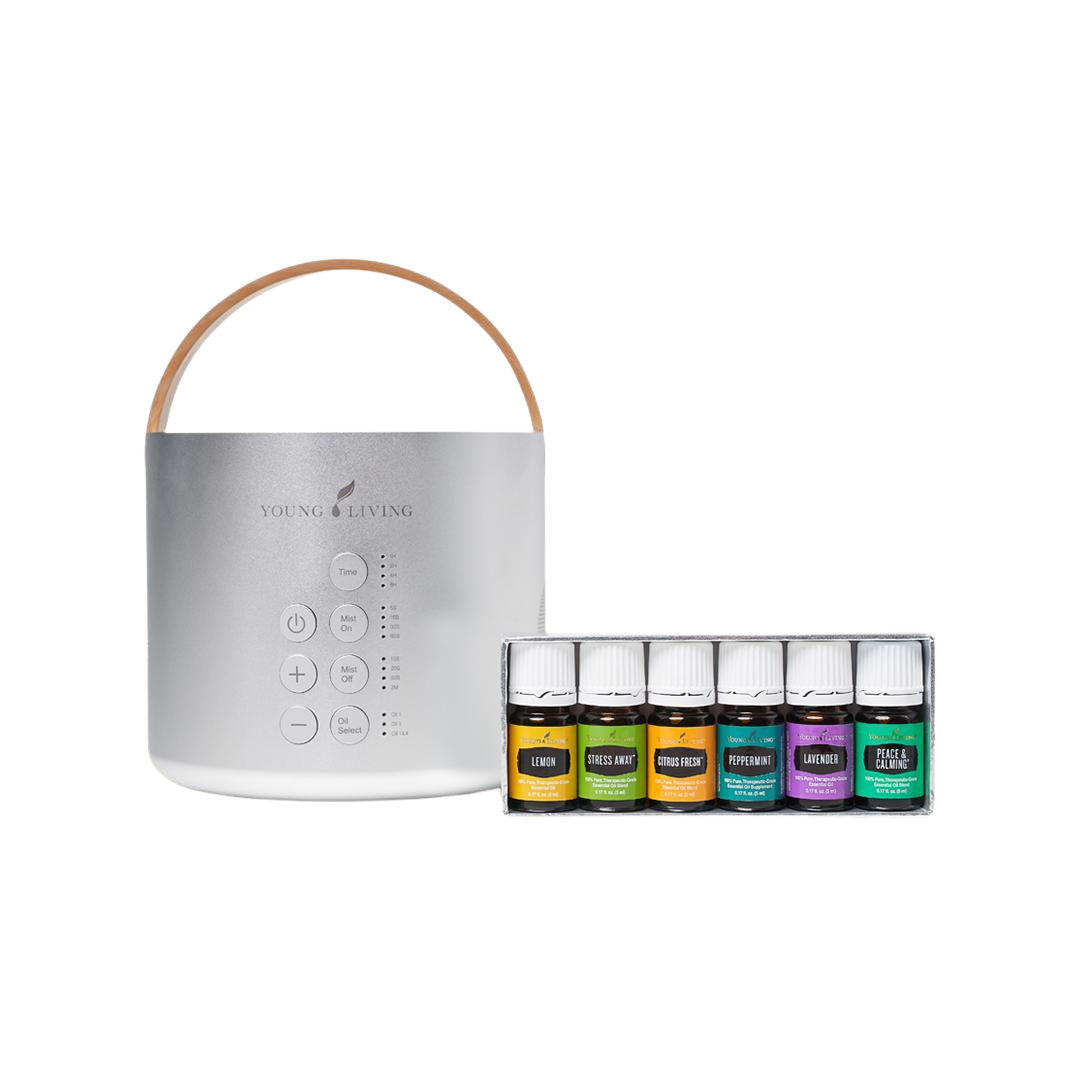Essential Oils
From the seed of the plant to the seal of the bottle, every step of the essential oil production process should take precise care - and that is why we partner with Young Living®, the world leader in essential oils.
Whether you use oils for aromatherapy, personal care, or as household solutions, all aspects of your life will get a boost with a few drops of essential oils!
Each essential oil contains hundreds of naturally occurring chemical constituents, many of which have been studied for their extensive benefits. This is what makes an essential oil so versatile! Highly concentrated and more potent than the herb, essential oils are also fat-soluble and volatile which makes them readily available for our bodies to use!
These powerful, pure essential oils are not just a new fad or trend; they have enhanced lives for thousands of years, offering a variety of benefits, from beauty and dietary purposes to spiritual and religious use. You can use oils for aromatherapy, change the atmosphere and mood of any space, support a healthy body, add them to your beauty routine, enhance DIY recipes, and even clean with them! Every aspect of daily life can benefit from the incorporation of essential oils.
There are three ways to use essential oils: aromatically, topically, and internally. Each method benefits our bodies in different ways.
Where your essential oils come from matters. Unfortunately, many brands today prioritize profit over purity, authenticity, and integrity. Since discovering Young Living® and the Raindrop Technique® in 2012, we’ve trusted their commitment to quality — and that’s why we continue to partner with them today.
What are essential oils? They are tools for wellness…
Essential oils are concentrated extracts harvested from plants, herbs, and trees, which are carefully steam distilled or cold-pressed. These pure, precious oils are more potent than the botanicals from which they’re extracted and contain powerful, concentrated health and wellness benefits. Used in hospitals, offices, clinics, and homes everywhere, aromatherapy bridges the new and old, and spans a variety of practices.
Not all essential oils on the market are created equal.
Synthetic Fragrances vs. Essential Oils
The Hidden Toxins in Air Fresheners & Scented Candles
Synthetic fragrances may be the most common type of harsh-chemical that can be found in the home. Air fresheners, plug-in type deodorizers, and scented candles can emit hundreds of harmful chemicals known to be carcinogens, respiratory and endocrine disruptors, and reproductive toxicants, even at low levels.
In 2014, Scientific American reported that a study in the journal, Environmental Health Perspectives, shows a strong link between exposure to phthalates (chemicals that are found in air fresheners and often plastics) during pregnancy and the child’s future risk of asthma.
Making the switch to health-promoting products is simple. It’s simple to replace virtually every harsh product in your home with a clean switch! Diffusing essential oils provide a safe and effective method for purifying and scenting the air in your home as a fantastic alternative to harmful air fresheners, candles, and plug-ins.
Top 10 Essential Oils & Their Everyday Wellness Benefits
1. Lavender
Promotes a calming and relaxing aroma—perfect for winding down in the evening.
Commonly used in bedtime routines or diffused to create a tranquil atmosphere.
A few drops in laundry or linens help refresh fabrics with a clean, floral scent.
💡 Fun fact: Lavender was one of the first essential oils used in aromatherapy.
2. Peppermint
Offers a cooling and invigorating scent—great for a mid-day refresh.
Diffuse or apply (diluted) before workouts for a motivating atmosphere.
Add to DIY cleaning sprays or soaps for a crisp, energizing aroma.
💡 Did you know? Peppermint is one of the oldest herbs used for aromatic purposes, dating back to ancient Egypt.
3. Lemon
Brightens the mood with a clean, uplifting aroma.
Excellent for freshening the air or adding to homemade cleaners.
A drop in laundry or on cotton balls in trash cans helps neutralize odors naturally.
💡 Fun fact: Lemon oil is cold-pressed from the rind, not the fruit pulp.
4. Frankincense
Known for its grounding and meditative aroma—ideal for quiet moments or yoga practice.
Commonly used in skin care routines for its warm, woodsy scent.
Diffuse during reflection or prayer to encourage focus and mindfulness.
💡 Fun fact: Frankincense resin has been valued for thousands of years and was once traded as highly as gold.
5. Thieves®
A warm, spicy blend that freshens indoor air and cleans naturally.
Add a few drops to cleaning products or laundry for a comforting, clean scent.
Diffuse in the home for a welcoming, cozy aroma.
💡 Fun fact: Thieves is inspired by a 15th-century legend about French herbalists who used aromatic botanicals while protecting themselves during trade.
6. Stress Away™
Combines lime and vanilla for a sweet, tropical aroma that promotes relaxation.
Apply to wrists or diffuse for a spa-like atmosphere during busy days.
Great for travel or daily commutes to help reset the mood.
💡 Fun fact: Stress Away was the first Young Living blend to feature Copaiba essential oil.
7. Purification®
Neutralizes unwanted odors with a fresh, crisp scent.
Add to cotton balls or wool dryer balls for natural deodorizing power.
Perfect for use in kitchens, cars, or gym bags.
💡 Fun fact: Contains citronella and lemongrass—plants often used for their naturally refreshing properties.
8. Cedarwood
Has a warm, woodsy aroma that creates a sense of grounding and comfort.
Ideal for diffusing before bedtime or adding to hair and beard products.
Mix with Lavender for a deeply relaxing nighttime blend.
💡 Fun fact: Cedarwood trees can live up to 1,000 years and have been prized for their aromatic wood.
9. Rosemary
Offers a herbal, clarifying scent that can help freshen the air.
Diffuse when studying or working to support a focused environment.
Add to shampoos for a fresh, botanical scent.
💡 Fun fact: Ancient scholars wore rosemary garlands to help maintain focus during study.
10. Valor®
Inspires feelings of confidence and balance through its bold, woodsy aroma.
Great to diffuse in the morning as part of an intentional start to your day.
Apply to wrists or neck (diluted) as a natural personal fragrance.
💡 Fun fact: Valor is known as one of Young Living’s signature blends for promoting emotional alignment.
Explore Our Favorite Essential Oil Bundles
Benefits of Diffusing Essential Oils
One of the BEST ways to reap the emotional benefits of essential oils.
Distributes essential oil molecules into the air by breaking them down into micro-particles and dispersing them through the air.
Maximizes the beneficial properties of essential oils by inhalation.
Cleanses and purifies the air.
Makes your home or classroom smell amazing.
Can calm the crazies.
How fast do oils work?
When inhaling an essential oil, the oil molecules reach the brain in 22 seconds!
When applying essential oils topically, the oil is found in the bloodstream within 2 minutes!
Not sure where to apply an essential oil?
The bottoms of your feet is always a great place to apply essential oils. Why? Because the bottoms of your feet have the largest pores of your skin, and all of your nerve endings lead to the bottoms of your feet, where according to Eastern medicine and reflexology, there are points in your feet that connect to different organs and areas of your body, creating a 'highway' system for the oils to penetrate every cell of the body within 20 minutes of application.
Frequency of Essential Oils
Essential oils have a bio-electrical frequency that is several times greater than the frequency of herbs, food, and even the human body.
There have even been clinical studies done that demonstrate that essential oils can quickly raise the frequency of the body, restoring it to normal healthy levels. Learn more in our blog: Frequency Connection
Any science-minds would appreciate this. This is from Dr. Cole Woolley, who is a third-party essential oils analyst:
Essential Oil Quality - The Perfumer's Trick with Lavender
I've received many questions regarding the LOWER quality essential oil grades: Manipulated, Perfumed, and Synthetic. Here's a good example of the Perfumer's Trick....
We know THEIR main motives: Create unique high-impact aroma to please unsuspecting customers AND money-money-money.
EXAMPLE: One of Their very common TRICKs is to manipulate and perfume lavender oil. This is very TRICKY!!!!! Two key "lavender aroma" components of natural lavender essential oil are Linalool and Linalyl Acetate. Unfortunately, the Perfumer's Trick is to add a natural/synthetic chemical to natural lavender essential oil. They TRICK your nose!!!!!!
Here's how they do it.
They source natural Linalool from the steam-distilled essential oil of Howood. Howood is grown in southeastern China on large farms. Howood and its leaves contain about 90-95% Linalool (the long component colored in light GREEN and Blue). This portion of the molecule is natural and genuine grade.
The Linalool is fractionally distilled from Howood essential oil to enrich it's concentration to 99.9%-100.0%. At this point the Linalool is Manipulated.
Now the Manipulated Linalool is chemically modified to add an ACETATE group (colored in YELLOW and BLUE). This is done by adding a Synthetic chemical. The most common chemical additive is Acetic Anhydride. With Linalool + Acetic Anhydride in a kettle, add heat and the 2 combine to form natural/synthetic Linalyl Acetate.
The Linalyl portion of the molecule comes from natural Linalool. The Acetate piece comes from chemically-derived Acetic Anhydride.
They have created a natural/synthetic chemical to enhance the aroma of natural lavender essential oil. It is used in so many industries.
This natural/synthetic Linalyl Acetate is synthesized in high quantities in China. It is sold to perfume companies, toiletry producers, personal care manufacturers, and essential oil brokers to add to their products.
Essential oil brokers add the natural/synthetic Linalyl Acetate to steam-distilled lavender and lavendin to enhance the aroma and increase the volume. It is common to add 5-10% of this natural/synthetic chemical to Bulgarian lavender and sell it as French lavender. Sometimes the natural/synthetic Linalyl Acetate is added in France and other times in India. Some brokers add 10-20% of this synthetic aroma-enhancing chemical. It's a Perfumer's Trick!!!
The enhanced aroma of this Manipulated/Perfumed lavender smells GREAT!!!! People love the Manipulated and Perfumed aroma!!! That is how THEY sell most of the lavender oil on the market.
It's a TRICK. A Perfumer's Trick!!!
Credit Source: Dr. Cole Woolley, the essential oil explorer"
The Power of Smell
The sense of smell is the most powerful of the five human senses.
Smell must be functional in order for the sense of taste to work.
It is tied to adrenal health, allergies and breathing issues and countless more processes.
Smells such as freshly baked cookies, lilacs or perfumes can trigger visual memory.
10 deep breaths a day can release three pounds of toxins - just in the first week!
Breathing clean air is essential to get cleansing oxygen to all of the cells as well as removing toxins and waste.
Synthetic fragrances may be the most common type of harsh-chemical found in homes. Air fresheners, plug-in type deodorizers, and scented candles can emit hundreds of harmful chemicals known to be carcinogens, respiratory and endocrine disruptors, and reproductive toxicants, even at low levels.
“Fragrance” is a carcinogen (known to cause cancer), and can cause neurotoxicity, allergies, and skin sensitivities; they are used in a variety of cosmetics to add aroma. Companies do not have to disclose the ingredients due to “trade secrets”.
A popular question that is asked is if essential oils are fragrances, and the answer is, no, they are not the same - at least for the essential oils directly from Young Living. Young Living essential oils are the closest thing to nature you can get for enhancing the aroma of your home while giving you health benefits that fragrances do not do.
90% of our energy comes from just breathing the air.
Try adding a diffuser with Young Living essential oils to your space, or drop your favorite Young Living essential oil into your palms (try peppermint for energy) and breathe in deeply.
How Aromatherapy Works
Inhalation of essential oils can have some very profound physiological and psychological effects.
Essential oils enter the bloodstream of the body and act as catalysts to create balance in the cells and organs. The body processes scent through the nose/olfactory system to the limbic system in the brain, which controls emotions and is the keeper of learned memories.
The limbic system is directly connected to those parts of the brain that control heart rate, blood pressure, breathing, memory, stress levels, and hormone balance. The volatile scents of the plant are chemical messengers that trigger this brain function and influence our emotions.
When we smell something, that scent goes into our bloodstream almost immediately …like breathing in chlorine when they're shocking the pool - it’s in your bloodstream.
Under the microscope
Watch what happens to blood cells under the microscope after being exposed to various substances, including essential oils.
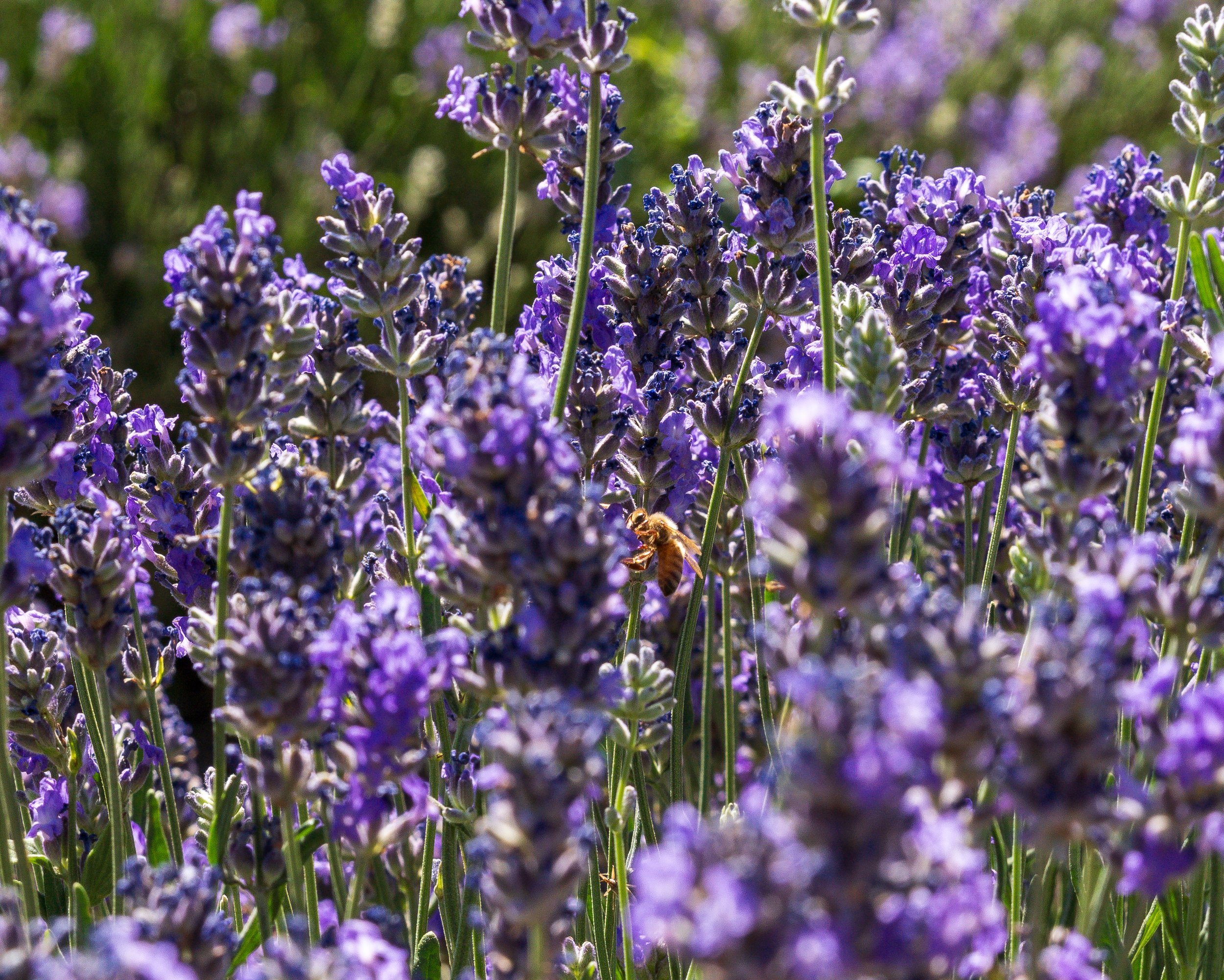
Bee in the Lavender - Young Living's Mt. Nebo Farm, Mona, Utah

Cooker filled with Grand Fir - Young Living's Highland Flats Farm, Naples, Idaho

Lavender Field - Young Living's Mt. Nebo Farm, Mona, Utah
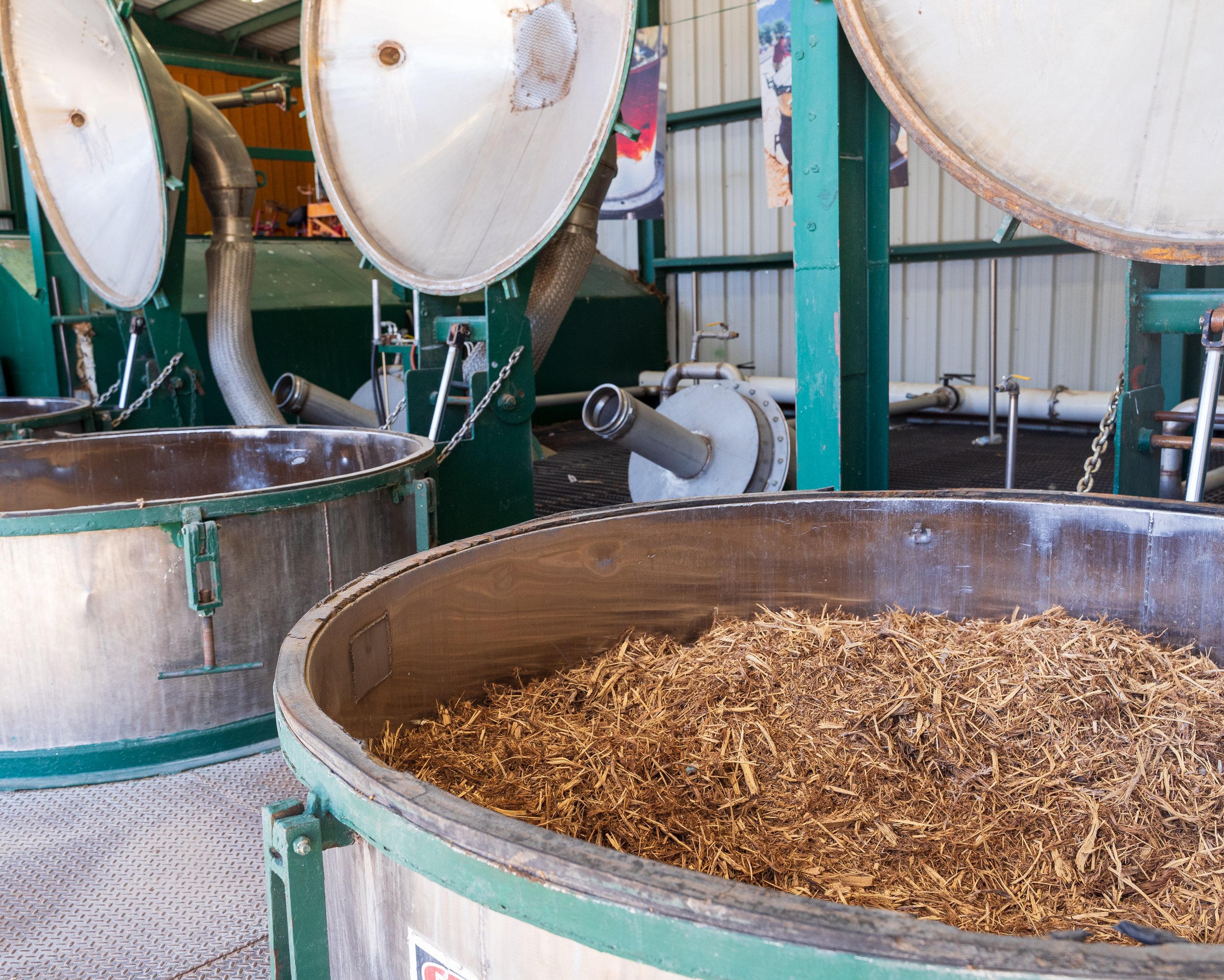
Juniper in the cooker - Young Living's Mt. Nebo Farm, Mona, Utah
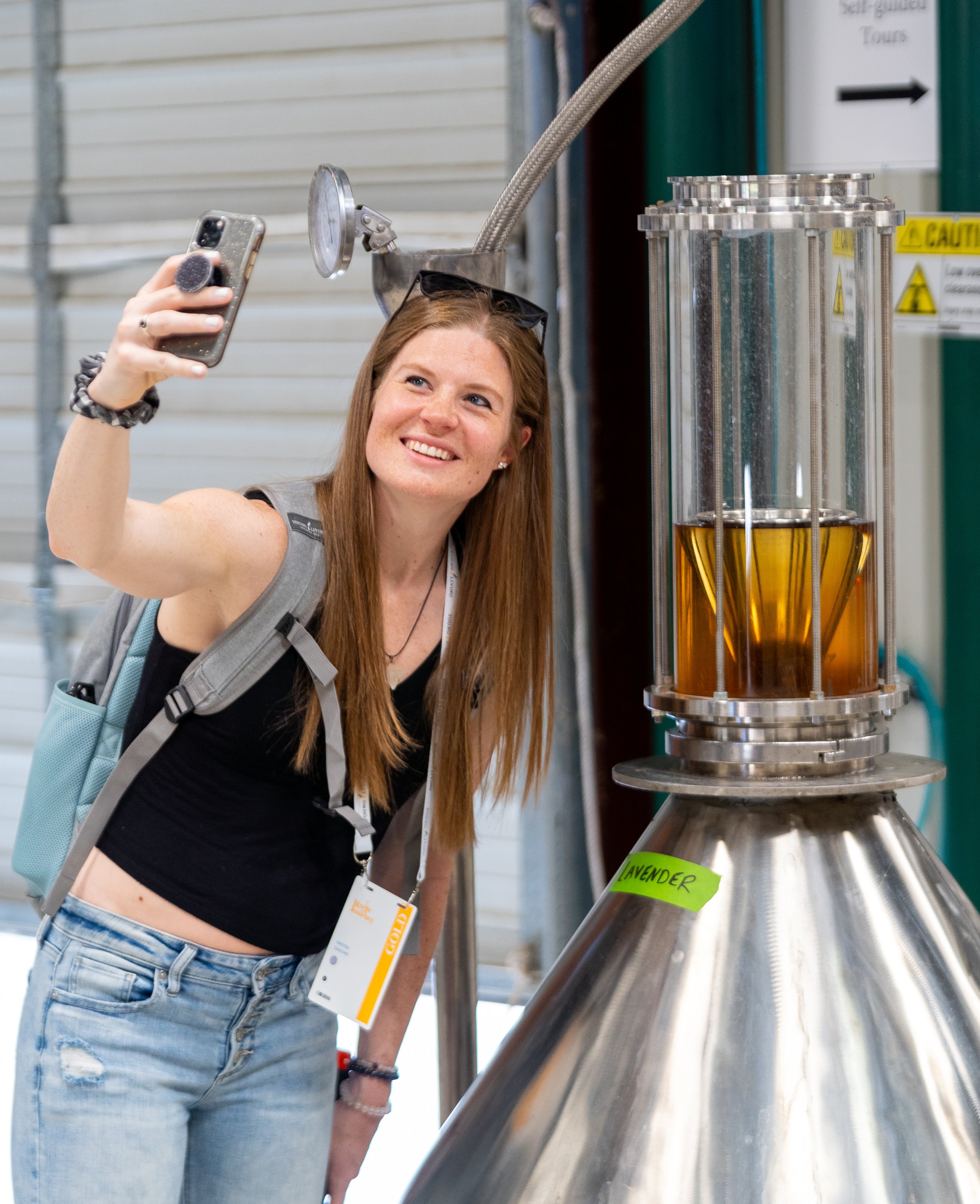
Fresh-distilled Lavender essential oil - Young Living's Mt. Nebo Farm, Mona, Utah

Young Living's Mt. Nemo Farm, Mona, Utah

Harvesting Einkorn wheat - Young Living's Mt. Nebo Farm, Mona, Utah

Young Living's St. Maries Farm - St. Maries, Idaho

Planting Grand Fir saplings - Young Living's Highland Flats Farm, Naples, Idaho
“The leaves of the trees are for the healing of the nations.”
-Revelation 22:2
“Then they opened their treasures and presented Him with gifts of gold, frankincense and myrrh”
-Matthew 2:11
Memberships
Become a member of Revolutionary Wellness for exclusive access to events, discounts, and holistic health tools!
Discover Your Personalized Path to Healing and Well-Being
Discover Your Personalized Path to Healing and Well-Being
Are you ready to release tension, restore balance, and reconnect with your natural vitality?
I combine the art and science of holistic healing to help you achieve lasting wellness—mind, body, and spirit.
I’m a Licensed Massage Therapist, Certified Sound Healer, and Traditional Doctor of Naturopathy, dedicated to helping you experience deep relaxation and energetic harmony.
Ready to Begin Your Wellness Journey?

